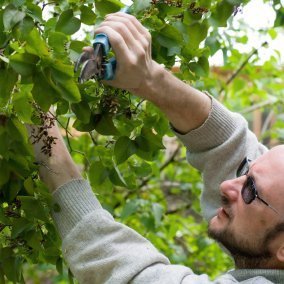The most common mistake people make when pruning flowering shrubs is doing it at the wrong time. Pruning at the wrong time of the year won't usually hurt your plant, but pruning at the right time can help improve flower production. Although each flowering shrub has its own requirements, here are some general guidelines to follow when trying to determine the best time to prune.
Most flowering shrubs need very few touch-ups with the pruning shears. One of the main reasons to prune them is to help guide their natural growth. Pruning encourages flower and fruit production and allows more light and air to reach the inner branches. An occasional polite shaping will help them maintain a pleasing, healthy form, and will usually be rewarded with a prolific amount of blooms.
You should never need to prune your flowering shrubs more than once a year. Flowers take a long time to form, so if you continue to trim them every few months you will increase your chances of removing future blooms. Always use sharp, clean tools when pruning. This will prevent injury to branches and minimizes the risk of introducing disease.
Flowering shrubs that bloom on new wood usually don't bloom until after June and are considered "late-flowering". These shrubs spend the first part of the season producing new wood, and the second part of the same season flowering. They should be pruned in late winter or early spring before the new growth starts. An example of this type of shrub is Mock Orange.
Flowering shrubs that bloom on old wood usually bloom earlier in the season. Examples of this type of shrub include forsythia and lilacs. These shrubs produce flower buds along their stems during the preceding autumn, and should be pruned immediately after they bloom so that they can spend the rest of the season focusing on new growth.

About The Author: Ellen Brown is an environmental writer and photographer and the owner of Sustainable Media, an environmental media company that specializes in helping businesses and organizations promote eco-friendly products and services. Contact her on the web at http://www.sustainable-media.com
Add your voice! Click below to comment. ThriftyFun is powered by your wisdom!